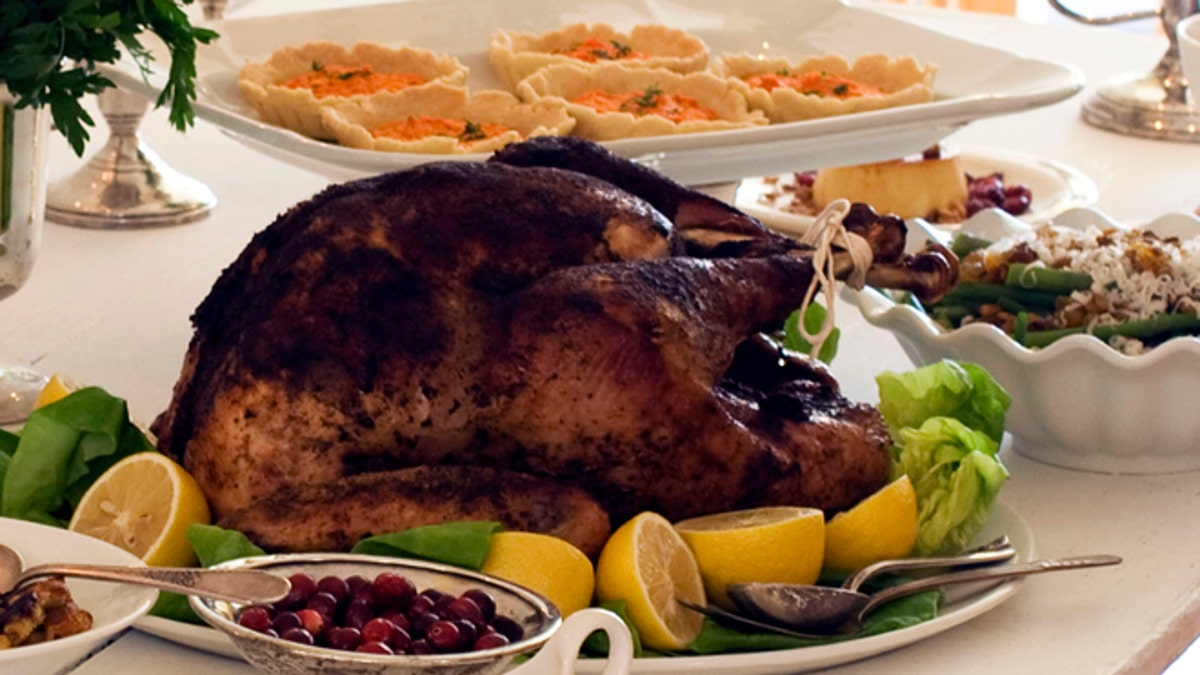
October 22, 2012: A gourmet Thanksgiving dinner. (AP)
This year I’m using Thanksgiving as the kick-off for a new family initiative: a reboot of the way we teach our three children about giving. In the wake of Hurricane Sandy, a storm of epic proportions for the New York area and the latest in a recent slew of natural disasters, I decided we could improve the way we teach our kids about giving back so they’d do it freely, regularly and on their own, without the baggage of guilt or obligation so often associated with stuff parents make kids do.
My strategy is to approach this reboot like a PR campaign for a new brand. Changing the conversation about giving back is not all that different from a brand launch: identify challenges with the current approach, place it and related issues in a relevant cultural context, make authentic connections for your audience, choose the mix of media, and then start a movement so their peers will support them and want to join in.
Challenges with the current approach: What parent hasn’t employed the “Save some, spend some, give some” strategy in helping kids to manage an allowance or birthday money from grandma? It is a time-honored mantra that works. The challenge arises when it becomes rote and bereft of any real connection to either the actual giving or the recipient of their contribution.
Similarly, while regular drop-offs of food or coats to needy and worthy organizations are good ways to teach kids about philanthropy, the endgame tends to fade into the background.
Ditto for the sporadic community service efforts they may do with school, scouts or places of worship. All terrific starts, just not enough.
Cultural context: Giving is something the kids can do nearly every day. Their actions are just as important on the small scale as they are on the world stage. The value of helping a peer with a difficult math problem or giving up a seat on the subway for an older person is no less than the online donation my husband immediately makes to a global relief organization every time there is a crisis.
Moving forward, we’ll devote more ongoing, casual dinner table conversation to how to give (and receive) on all levels. We’ll encourage the kids to develop their own points of view about their roles as family-, class-, city- and world-citizens and explore if or how these could be worked into projects or even Letters to the Editor of our local or their school newspaper.
Authentic connections: According to clinical psychologist, Francesca Schwartz, an obstacle to getting kids to genuinely own the idea of giving back is that many philanthropic opportunities available to them tend to be “inorganic” and derive from a single opportunity or requirement as opposed to emerging naturally.
So, this campaign will feature ways the kids can participate that reflect their own interests and values. No time like the present to begin, so on the Wednesday before Thanksgiving, we’ll all volunteer as part of a storm relief effort in the Rockaways with my son’s travel soccer club. It’s not about the actual activities we’ll be doing to help out, which don’t necessarily have to be fun, says my older son. It’s the feeling you get from doing it within the context of something you love –soccer, in this case, that makes it connect.
Start a movement: From a PR perspective, there is no greater win than getting caught in the act of doing something good. Toward this end, I’ll encourage the kids to post pictures of themselves, their family and friends in the act of giving back on their Facebook walls and Instagram accounts.
Ideally, others will do the same; I’m aiming for viral here. I’ll bet watching those “likes” add up will deliver “that feeling” far faster than any accolades from Mom and Dad or community service credit on a school report.
As with any brand launch, I’ll measure the results along the way. Based on how things go, I may have to tweak the effort again next Thanksgiving, but by then, maybe the campaign will have expanded to MTV. I already have a working title: "Rock the Give."
